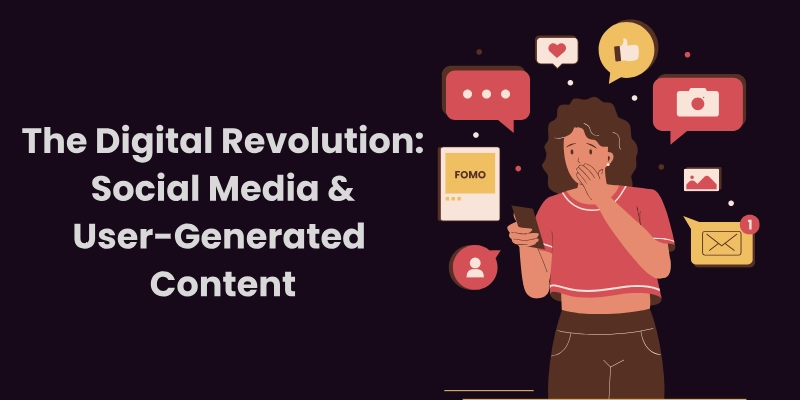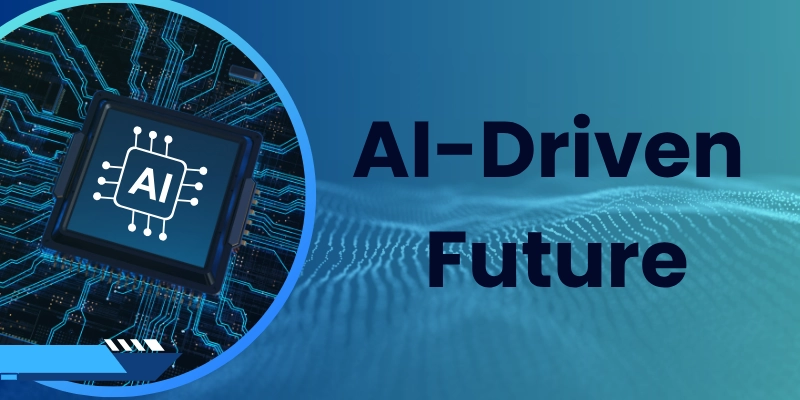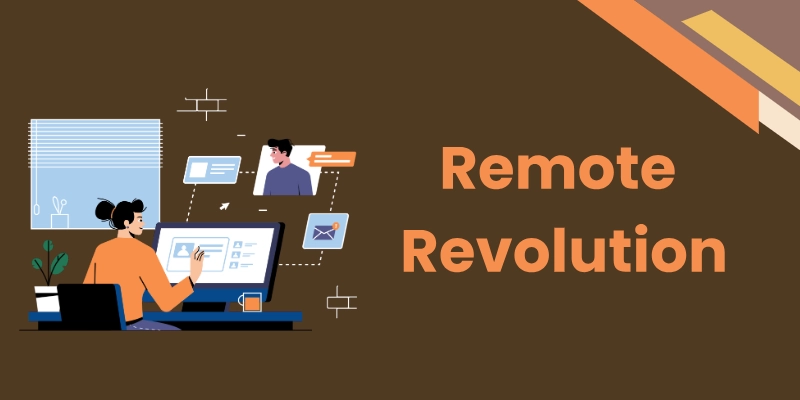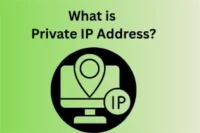Internet Trends: Past, Present, and Future
Published: 25 Jun 2025
The internet has transformed the world in ways no one could have imagined a few decades ago. From simple text-based pages to realistic and engaging digital experiences, the internet continues to evolve, shaping how we communicate, shop, learn, and entertain ourselves. Understanding the internet’s past, present, and future trends is crucial to grasping its impact on society and predicting where it might be headed next.

In this article, we’ll explore the internet trends. We’ll look at its early days and key milestones. We’ll also discuss future trends, such as social media, artificial intelligence, and blockchain. These innovations have reshaped our digital world.
The Early Days of the Internet
The following highlights the early days of the internet and how it began its journey toward becoming a global network:
The Origins of the Internet
The internet, as we know it today, was not built overnight. Its origins trace back to the 1960s, when ARPANET, the first functional computer network, was developed by the U.S. Department of Defense. This network laid the foundation for modern internet protocols and the interconnected world we live in today.
Key Features of Early Internet
- Slow Connectivity: Dial-up internet connections using phone lines were the norm, often leading to frustratingly slow browsing experiences.
- Limited Access: Only a few institutions, such as universities and government agencies, had access to the Internet in its early days.
- Basic Web Pages: Early websites were static, text-heavy, and lacked any form of interactivity or multimedia content.
- Email as a Primary Tool: One of the earliest uses of the Internet was email, which revolutionized communication long before social media existed.
By the 1990s, the introduction of the World Wide Web (WWW) and web browsers like Netscape Navigator made the Internet more accessible to the general public. This decade marked the beginning of a digital revolution that would change industries forever.
The Dot-Com Boom and Bust
The rise and fall of internet-based businesses in the late 1990s and early 2000s is known as the Dot-Com Boom and Bust:
The Rise of Online Businesses
- E-commerce Emerges: Companies like Amazon (founded in 1994) and eBay (founded in 1995) paved the way for online shopping.
- Domain Name Frenzy: Businesses scrambled to secure valuable domain names, often spending millions.
- Investment Overload: Startups attracted enormous funding despite lacking a clear revenue model.
The Crash of 2000
By the early 2000s, the bubble burst. Many internet companies went bankrupt as their valuations plummeted. The crash served as a wake-up call, highlighting the importance of sustainable business practices in the digital world.

Web 2.0: The Rise of Social Media and User-Generated Content
The transition to a more interactive and user-centered internet era began with the advent of Web 2.0:
Key Innovations in Web 2.0
- Social Media Platforms: Facebook (2004), YouTube (2005), Twitter (2006), and other platforms changed how people interacted online.
- User-Generated Content: Blogging platforms like WordPress and Medium allow individuals to create and share their content.
- Interactivity and Engagement: Websites became more dynamic, featuring comments, likes, and personalized recommendations.
The shift to Web 2.0 transformed the internet from a static information hub into an interactive ecosystem where users could engage, share, and create content.
The Mobile Revolution: Internet Goes Everywhere
The widespread adoption of smartphones marked a new phase where the internet became accessible anytime, anywhere:
How Mobile Changed the Internet
- Social Media on the Go: Platforms like Instagram, Snapchat, and TikTok thrived on mobile-friendly interfaces.
- Apps over Browsers: The rise of mobile apps provided seamless experiences compared to traditional web browsing.
- Instant Connectivity: Messaging apps like WhatsApp and Messenger replaced traditional SMS and email for quick communication.
The mobile revolution ensured that internet access was no longer confined to desktops and laptops. Instead, users could engage with content anytime, anywhere.

The Age of Streaming and On-Demand Services
The internet has revolutionized media consumption, leading to the rise of streaming and on-demand services:
Key Trends in Streaming
- Rise of Subscription-Based Platforms – Companies like Netflix, Hulu, Disney+, and Amazon Prime Video have revolutionized entertainment.
- Decline of Traditional TV – Many users, especially younger generations, have cut the cord and prefer streaming services over cable.
- Live Streaming Popularity – Platforms like YouTube Live, Twitch, and Facebook Live have made real-time content more interactive and engaging.
The Role of Algorithms in Content Consumption
Streaming platforms use advanced AI-driven recommendation algorithms to suggest content based on user preferences. This personalization keeps users engaged and ensures that they spend more time on the platform.
The Future of Streaming
- The rise of cloud gaming services like Google Stadia and Xbox Cloud Gaming.
- More interactive and immersive experiences with virtual reality (VR) streaming.
- Increased competition among streaming platforms, leading to exclusive content wars.
E-Commerce and Digital Payments: A Cashless Economy
The following are key developments shaping the future of E-Commerce and Digital Payment methods in today’s cashless economy.
The Rise of E-Commerce Giants
- Amazon, Alibaba, and Shopify have changed the way businesses sell products.
- Small businesses now thrive through platforms like Etsy and eBay.
- Social commerce has emerged, with platforms like Instagram and TikTok Shop enabling direct purchases.

Digital Payments and Cryptocurrencies
- Mobile wallets like Apple Pay, Google Pay, and PayPal have made transactions seamless.
- The rise of cryptocurrency payments and decentralized finance (DeFi) is challenging traditional banking systems.
- Buy Now, Pay Later (BNPL) services like Afterpay and Klarna are reshaping consumer spending habits.
What’s Next for E-Commerce?
- AI-powered shopping assistants provide real-time suggestions.
- The integration of augmented reality (AR) for virtual try-ons.
- Blockchain-powered transactions ensure secure and transparent payments.
AI and Automation in the Internet Era
The following highlights how artificial intelligence and automation are shaping the modern internet landscape:

Key Applications of AI on the Internet
- Chatbots and Virtual Assistants – AI-powered chatbots like ChatGPT and virtual assistants like Siri and Alexa provide instant responses.
- Automated Content Creation – AI-generated articles, product descriptions, and even music are becoming common.
- Smart Advertising – Platforms like Google Ads and Facebook Ads use AI to target users with highly relevant ads.
The Impact on Jobs and Society
While AI enhances efficiency, it also raises concerns about job displacement. Many traditional roles in customer service, content writing, and marketing are being replaced by AI-powered tools. However, new opportunities are emerging in AI development and ethical AI governance.
Future Possibilities
- AI-powered self-driving vehicles revolutionizing transportation.
- AI-generated influencers taking over social media.
- The growth of AI-driven cybersecurity solutions to combat online threats.

The Impact of the Internet on Work and Remote Collaboration
The internet has significantly transformed the way we work and collaborate, especially with the rise of remote work:
Key Developments in Online Work Culture
- Rise of Remote Work – Companies have embraced hybrid and fully remote work models, allowing employees to work from anywhere.
- Collaboration Tools – Platforms like Zoom, Slack, Microsoft Teams, and Asana have become essential for teamwork.
- The Gig Economy – More individuals are turning to freelancing through websites like Upwork, Fiverr, and Freelancer.
Advantages and Challenges of Remote Work
| Advantages | Challenges |
| Flexibility in work hours | Lack of face-to-face interaction |
| Access to global talent | Difficulty in maintaining work-life balance |
| Cost savings for businesses | Cybersecurity threats and data privacy issues |
What’s Next for Remote Work?
- Metaverse offices – Virtual reality workplaces where teams can collaborate in a digital space.
- More companies adopting 4-day workweeks for better productivity.
- AI-powered virtual assistants help employees manage tasks more efficiently.
Cybersecurity and Privacy Concerns
Common Cyber Threats
- Phishing Attacks – Fraudulent emails and messages trick users into revealing sensitive information.
- Ransomware – Malicious software locks users out of their systems until a ransom is paid.
- Data Breaches – Companies like Facebook and LinkedIn have experienced massive data leaks.
How to Stay Safe Online
- Use strong passwords and enable two-factor authentication (2FA).
- Be cautious of suspicious links and attachments in emails.
- Regularly update antivirus software and firewalls.
- Consider using VPNs for secure browsing, especially on public Wi-Fi.
The Future of Cybersecurity
- AI-driven security solutions that detect threats in real time.
- Stricter global regulations for data protection (e.g., GDPR).
- Advancements in quantum cryptography for unbreakable encryption.
The Future of the Internet: What’s Next?
The following are key trends and innovations shaping the future of the Internet in the digital age.
Key Future Trends to Watch
- Decentralization with Web3 – Moving away from centralized platforms like Google and Facebook.
- Increased AI Integration – AI-powered tools shaping search engines, chatbots, and content creation.
- Immersive Internet – The rise of augmented reality (AR) and virtual reality (VR) in digital interactions.
The future internet will be more secure, intelligent, and user-controlled, giving individuals more power over their data and online experiences.
The Influence of 5G and Beyond
The following are major advancements and impacts driven by 5G technology and its future successors on connectivity and innovation.
Benefits of 5G Technology
- Faster downloads and streaming – Ultra-high-definition (UHD) and 4K video content will become standard.
- Better connectivity for IoT devices – Smart homes, self-driving cars, and connected cities will thrive.
- Enhanced gaming and cloud computing – 5G reduces lag, making cloud gaming more practical.
What Comes After 5G?
- 6G technology is expected to be 100 times faster than 5G, with real-time holographic communications.
- Quantum networking may replace traditional data transfer methods, making the internet instantaneous and unhackable.
Sustainability and the Internet: Green Technology Trends
The following are key green technology trends promoting sustainability in the digital and internet-driven world.
How Tech Companies Are Going Green
- Google and Microsoft are investing in carbon-neutral data centers.
- Blockchain projects are moving towards proof-of-stake (PoS) to reduce energy consumption.
- AI-driven energy management is optimizing power usage in tech infrastructure.
Future Green Internet Solutions
- Solar and wind-powered data centers will become mainstream.
- Companies will adopt eco-friendly AI algorithms to reduce server loads.
- E-waste recycling programs will be widely implemented to reduce electronic pollution.
Challenges and Ethical Concerns in the Internet’s Evolution
The following are major challenges and ethical concerns arising from the rapid evolution of the Internet.
Major Ethical Issues in the Digital Age
- The Digital Divide – Unequal internet access between developed and underdeveloped regions.
- AI and Algorithm Bias – AI-powered platforms reinforcing stereotypes and discrimination.
- Privacy Violations – Companies collecting and selling user data without consent.
Possible Solutions
- Global internet access initiatives like Starlink and Google’s Project Loon.
- AI regulation policies to ensure fairness and transparency.
- Stronger data privacy laws to give users more control over their information.
Conclusion
The internet has come a long way from dial-up connections and basic websites. It has revolutionized industries and changed how we communicate. Today, mobile-first experiences, streaming, AI-driven automation, and cybersecurity concerns dominate the landscape. Looking ahead, Web3, 5G, green tech, and ethical AI will shape the future. One thing is certain: the internet will continue to grow and adapt, transforming how we live, work, and connect. Staying informed about these trends is crucial for individuals and businesses to prepare for the next digital revolution.
We’d love to hear your feedback! Don’t forget to leave a review and let us know how we did.
FAQs
The following are frequently asked questions (FAQs) related to the evolving landscape of the Internet and digital technologies.
The internet has evolved from slow, text-based browsing to interactive, AI-driven, and mobile-first experiences. Major shifts include the rise of social media, streaming, e-commerce, and Web3 innovations.
Cybersecurity threats, misinformation, the digital divide, and ethical concerns surrounding AI and data privacy remain key challenges.
AI is driving personalized recommendations, automation, content creation, cybersecurity, and even influencing business decisions through data analytics.
Web3 and blockchain will decentralize the internet, reducing reliance on big tech companies, enhancing security, and giving users more control over their data and online interactions.
While advancements in cybersecurity are improving data protection, cybercriminals are also evolving. Stronger encryption, AI-driven security measures, and blockchain innovations will help mitigate risks.
5G offers faster speeds, lower latency, and supports more connected devices, enabling advancements in IoT, smart cities, and immersive technologies like AR and VR.
Digital technologies are driving sustainable practices through energy-efficient data centers, remote work, smart devices, and innovations in green computing.

- Be Respectful
- Stay Relevant
- Stay Positive
- True Feedback
- Encourage Discussion
- Avoid Spamming
- No Fake News
- Don't Copy-Paste
- No Personal Attacks

- Be Respectful
- Stay Relevant
- Stay Positive
- True Feedback
- Encourage Discussion
- Avoid Spamming
- No Fake News
- Don't Copy-Paste
- No Personal Attacks





